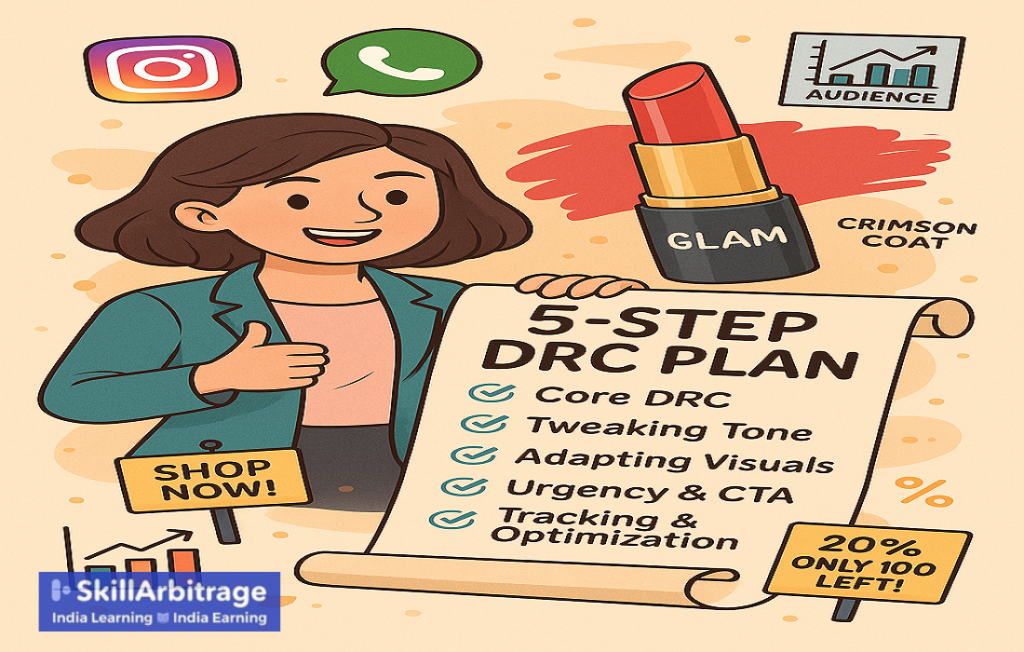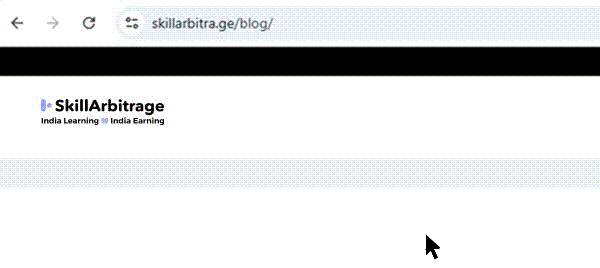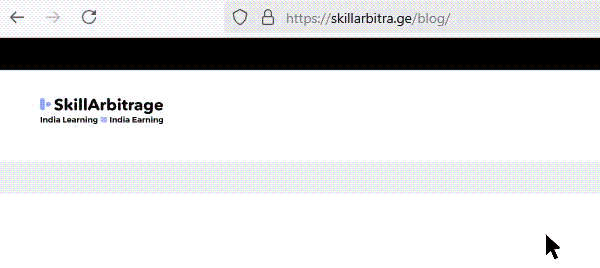This is a guide on repurposing DRC (Direct Response Copywriting) content across several channels and media. It would be handy for marketers, small brand owners, and content writers who want to use DRC optimally on a shoestring budget. To know how to craft DRC, please visit my earlier blog.
Table of Contents
Introduction
I am glad to report that Glam, the small lipstick brand I was marketing for, was thriving well. The client base was steadily growing, and while the sales did not quite touch the roof yet, the profit lines were increasing.
The time was right to launch a new shade, so they promptly rolled out the new shade Crimson Coat on cue.
Now my work started! We had to make some noise before and during the launch.
There had to be a cross-channel campaign. Multi-channel campaigns are always rolled out at the time of launches because they saw an amazing 118% lift in response rate compared to campaigns only restricted to digital media.
But the constraint, like all small brands, was the minimal budget.
I thought the only way to navigate that would be to create a DRC (Direct Response Copywriting) campaign to launch the new shade from Glam and take it across channels.
Why?
Because of the following reasons:
- DRC drove sales and moved the audience to take immediate action.
- Glam was a small brand, so I could not launch a new shade by saying something like “New offering from Glam”, but I could make the shade popular and let it reflect on Glam.
- In a small budget with a small brand, brand visibility took a back seat while sales ruled. I could do that easily with DRC.
- DRC’s core components are a compelling headline, benefit-driven message, emotional trigger (e.g., FOMO), social proof, and a clear CTA. These elements are universal and common to content across all platforms, making it ideal for repurposing.
And DRC was especially effective for a small brand.
You want to know why?
Look at this snapshot
It brought maximum impact on a teeny tiny budget. That was every small brand’s dream come true.
However, my client had a concern, they were pushing for new creatives for every channel, thinking that this would beat visual fatigue and attract new audiences.
But it would not. It would be both confusing and max out the budget.
By the way, here’s a marketing tip. When working with small budgets optimize channels and keep creatives to a select few.
But coming back to my client’s concern.
Why repurpose the DRC?
Saving resources and cost: Creating new copy for each platform is resource-intensive, a challenge for small brands with limited budgets. But repurposing one piece of DRC which really worked like an email, across channels, negated the risks and saved resources.
Maximizing reach: Different platforms attract different audiences (e.g., Instagram for younger users, LinkedIn for professionals) and this helped amplify the message.
For example, I could write a “Buy Now” email and repurpose that into Instagram Reels by making the key phrases into captions and providing supporting visuals. This would increase sign-ups without extra cost in time or money.
Boosting consistency: Repurposing ensures a unified brand voice. This was critical for building trust among the audience, especially for a small brand.
But the “why” part was not the difficult part, it was the “how” which tripped people up.
The point is, it needn’t. There are some actionable steps to get a perfectly successful repurposing campaign going.
Take a look at the steps I took to launch Glam’s new shade.
The 5-step process to repurpose direct response copy
Step 1: Starting with a core piece of DRC
First, I had to choose a high-performing piece of DRC content with a compelling headline, benefit-driven message, emotional trigger, social proof, and CTA. This is the foundation on which my multi-channel repurposing campaign would stand.
For example, I could start with an email for Glam’s Crimson Coat shade: “Unleash Your Inner Glam with Crimson Coat! This vibrant, long-lasting lipstick boosts confidence in seconds. Loved by 5,000+ customers, it’s 20% off for 100 units only. Shop now!”
This had all the necessary ingredients to make the DRC work on its own, like headline (“Unleash Your Inner Glam”), benefit (confidence), trigger (scarcity), social proof (5,000+ customers), and CTA (“Shop now”).
Then I had to write another version with a different headline like “Get red lips that slay all night with Crimson Coat.” highlighting a different proposition (long-lasting) and maybe vary the CTA also and use “Buy Now”. Emails with strong CTAs achieve 371% higher click-through rates. And I did not know at this point which CTA or headline would emerge strongest.
Then I had to use free tools like Mailchimp to analyze email performance (e.g., open rates) and select the best copy.
Step 2: Tweaking tone and length for each platform
Once I had the high-performing DRC in place, I had to tweak the length to suit each platform’s audience and format while keeping the core message intact. Platform-specific messaging could increase engagement rates by 18%.
Here is a breakdown of how I intended to do that.
You already know about the email. The same message across different platforms looked like this.
Instagram: Short, bold, visual (50–100 words): “Crimson Coat = Confidence! Glam’s vibrant shade lasts all day. Shop 20% off, 100 units left! #GlamVibes”.
LinkedIn: Professional, value-focused (150–200 words): “Glam empowers professionals to shine in the boardroom with CrimsonCoat, a long-lasting lipstick loved by 5,000+ customers. Shop now at 20% off.”
WhatsApp: Ultra-concise, urgent (20–30 words): “Glam’s Crimson Coat: 20% off, 100 units left! Shop now: [link].”
Look at this chart for a better understanding.
Step 3: Adapting visuals to enhance impact
After the content was frozen, I had to pair copy with platform-specific visuals to boost engagement.
These included a product picture with a bold “Shop Now” button for the email. Followed by a reel or carousel for Instagram (mainly a visual medium), and an infographic of customer reviews for LinkedIn. Visual content was key to driving engagement on social media and could drive 80% higher engagement.
Basically, the rule of thumb was choosing a visual specific to a platform, depending on its user base.
Step 4: Maintaining urgency and CTAs
However, I also had to ensure that every platform retains the original DRC content’s urgency and a clear CTA, adapting the phrasing to fit the medium.
Example:
- Email: “Shop now for 20% off—only 100 units left!”
- Instagram: “Swipe up to shop 20% off CrimsonCoat! 100 units left! #GlamVibes”
- LinkedIn: “Click to shop CrimsonCoat 20% off—limited stock!”
- WhatsApp: “CrimsonCoat 20% off! 100 left. Shop: [link].”
Step 5: Tracking and optimizing performance
The last step was always the A/B testing, for any campaign it could improve performance by as much as 20%.
So I had to use platform analytics to measure clicks, conversions, and engagement, as well as improve results via A/B testing.
Here is how I could do that for free:
There were free tracking tools for every platform. They did not have every feature of a premium, but were quite effective.
Once I had the information, I could use the free AI tool Claude.Ai to set up a tracking dashboard for easy visual representation.
And that was it.
Up till this point, it all seems a little too easy, doesn’t it? It isn’t. There are some common challenges. The good thing was that they had common fixes too.
Challenges and the fail-safe fixes
Challenge 1:Budget constraints:
This one was omnipresent. Small brands like Glam often work with tight budgets, making it difficult to create platform-specific visuals, access premium analytics tools, or hire marketing specialists for each channel. 65% of small businesses cited budget as their main marketing challenge.
This limits their ability to repurpose DRC effectively, as platforms like Instagram require high-quality visuals, while LinkedIn demands polished content.
Solutions:
Using free tools: By leveraging affordable or free tools like Canva (for visuals), Pixlr (for editing), and Mailchimp’s free tier (for email analytics) I could work around a small budget.
Prioritizing high-ROI platforms: I had to focus on platforms with low cost and high engagement, like WhatsApp (98% open rates in India) and Instagram (2 billion global users). For Glam, a WhatsApp campaign with a “20% off CrimsonCoat” text costs nothing beyond a subscription list.
Creating batch content: Repurposing DRC in bulk would save me a lot of time. Like I did with the email and its subsequent adaptation on Instagram and LinkedIn. Writing one Glam email and adapting it for Instagram and WhatsApp in a single session reduced the hassle as well as the workload.
Challenge 2: Competing with global brands
Small Indian brands face intense competition from global brands with larger budgets and established audiences.
Repurposing DRC for platforms like LinkedIn or Instagram requires standing out against brands like L’Oréal or Maybelline and their mammoth multi-channel campaigns.
Solutions:
Leveraging local appeal: I could highlight Indian cultural elements in the repurposed copy. For Glam, an Instagram reel could feature Crimson Coat in a Diwali makeup look or give an Indian wedding vibe, resonating with Indian audiences while appealing globally.
Focusing on niche audiences: I also planned to target specific segments, like young Indian professionals, with personalized DRC content. For example, a LinkedIn post for Glam could emphasize “confidence for the workplace” to attract career-focused women, while Instagram reels could be around Indian festivals to go with the fun, trendy vibe on Instagram.
Using social proof: I have already incorporated testimonials or user-generated content to build credibility. I could also repurpose a customer review (“Crimson Coat lasts all day!”) across platforms to compete with the trust generated by more well-established brands.
Another way was partnering with micro-influencers, as that could build credibility on social media platforms really fast, too.
Challenge 3: Platform-specific nuances and learning curve
As we saw earlier, each platform requires a different tone, length, and format, which can be overwhelming, to be honest. For instance, Instagram favors short, visual copy, while LinkedIn demands professional content, and WhatsApp needs ultra-concise texts.
Solutions:
Studying platform-specific best practices: I used free resources like Hootsuite’s blog or Sprout Social’s guides to learn platform-specific strategies. This is why I chose Reels for Instagram instead of static posts, keeping in mind that they had an 80% higher engagement rate than static.
Creating templates: I also developed a few reusable templates for each platform. For Glam, a WhatsApp template I used was: “[Product] [Offer]! [Scarcity]. Shop: [link].” Example: “CrimsonCoat 20% off! 100 left. Shop: [link].”Similar templates could be used across channels to streamline the process.
Starting small: I started with Instagram and WhatsApp before scaling to LinkedIn. It was less overwhelming than rolling out the entire campaign across all channels at one go.
Challenge 4: Tracking and measuring performance across platforms
We, those who work with small brands, often lack access to premium analytics tools or the expertise to track multi-channel performance, making it hard to know which repurposed DRC works best. But this is critical for optimizing campaigns.
Solutions:
Using free analytics tools: I leveraged platform-native tools like Instagram Insights, LinkedIn Analytics, and Google Analytics (free tier) to track clicks, engagement, and conversions.
Implementing UTM parameters: I also added free UTM codes to track cross-platform performance. For example, a Glam WhatsApp link could use “?utm_source=whatsapp&utm_campaign=crimsoncoat” to measure clicks in Google Analytics.
Focusing on key metrics: Tracking one or two metrics per platform (e.g., CTR for email and engagement for Instagram) was doable. For Glam, I prioritized Instagram link clicks to measure sales, for free.
And then it was done. I had a perfect DRC multi-channel campaign for Glam. The subsequent success of the Crimson Coat proved the campaign had managed to hit the bull’s eye.
Conclusion
As I wrapped up my first multi-channel campaign for Glam, I realized something powerful: I didn’t need a big budget or a huge team to make an impact. By taking one piece of direct response copy, like an email for the new shade and repurposing it for Instagram, LinkedIn, and WhatsApp, I tripled engagement and drove sales without reinventing the wheel.
That’s the magic of repurposing, and it’s a game-changer for Indian marketers like us, especially when competing with global brands.
This blog has shown you how to stretch a single piece of DRC into a multi-platform strategy that saves time, ensures consistency, and maximizes conversions. From crafting a core message with urgency and benefits to tweaking it for each platform’s vibe, you’ve got a five-step plan to make your campaigns shine.
Even challenges like budget constraints or platform nuances can be tackled with free tools like Canva and WhatsApp’s high open rates as we saw.
Now, it’s your turn.
Start small—take that email you wrote last week and turn it into an Instagram Reel or WhatsApp blast. You don’t need to be a global giant to see results. All you need is just one solid piece to DRC content to create an effective multi-channel campaign.
FAQs
1. Is it possible to repurpose DRC content for cold audiences, not just past visitors?
Answer:
Absolutely. While DRC is designed for warm audiences who already interacted with you, you can tweak the core assets (like product carousels, testimonials, or personalized offers) into dynamic acquisition ads for cold audiences. For example, you can use “most popular products” instead of “recently viewed” products, keeping the personalization feel while expanding reach.
2. How can I turn DRC creative into high-converting email campaigns?
Answer:
Your DRC feeds (product images, pricing, offers) can power personalized email blasts. Use the same segmentation logic (based on past behavior) but build static or semi-dynamic email templates — think abandoned cart emails, “we thought you’d love these” suggestions, or restock alerts. You’re basically borrowing your DRC logic but applying it to inbox marketing.
3. What’s one mistake to avoid when repurposing DRC for social media ads?
Answer:
Don’t directly copy-paste DRC creative into social — dynamic remarketing formats often assume some pre-existing context (like “Hey, you viewed this!”). Instead, reframe the messaging: use social-friendly angles like “Customers are loving these bestsellers!” or “Top picks just for you!” to make it less reliant on prior interaction and more inviting for engagement.
4. How do I adjust DRC content for organic content marketing (blogs, socials)?
Answer:
Take data insights from your DRC campaigns (best-performing products, frequent customer behaviors) and turn them into educational or trend-based content. For instance, if your DRC shows a surge in interest for eco-friendly products, create a blog like “Top 5 Sustainable Picks Customers Can’t Stop Buying.” You’re still leveraging DRC intelligence — just storytelling it differently.
5. Can I repurpose DRC videos and GIFs into other formats? How?
Answer:
Definitely! A dynamic video ad showing multiple products can be sliced into individual short clips for Stories, Reels, or Shorts. You can also turn dynamic GIFs into still carousel posts or animated banners for your website. Always think: how can I isolate high-performing micro-moments and redistribute them across channels?
6. How do I scale repurposed DRC without making everything feel robotic or repetitive?
Answer:
Create reusable templates for each platform. For example, swap out the product image or discount in a Canva design to keep content fresh without starting from scratch.
7. Is there a smart way to use DRC repurposing for SEO benefits?
Answer:
Yes! If your DRC shows certain products/categories getting more attention, create SEO-optimized landing pages targeting those product keywords. Example: if athletic shoes are trending, a page titled “Best Running Shoes for 2025: Our Top Picks” with curated products (inspired by DRC performance) can drive organic traffic + conversions.
8. How do I measure the success of repurposed DRC content?
Answer:
Track differently based on the new format. For ads, measure CTR, ROAS, and conversion lift separately from standard DRC. For emails, focus on open rates and click-throughs. For blogs and social posts, monitor engagement rates and assisted conversions. Always benchmark new versions against the original DRC performance to see if your tweaks made a real impact.







 Allow notifications
Allow notifications
